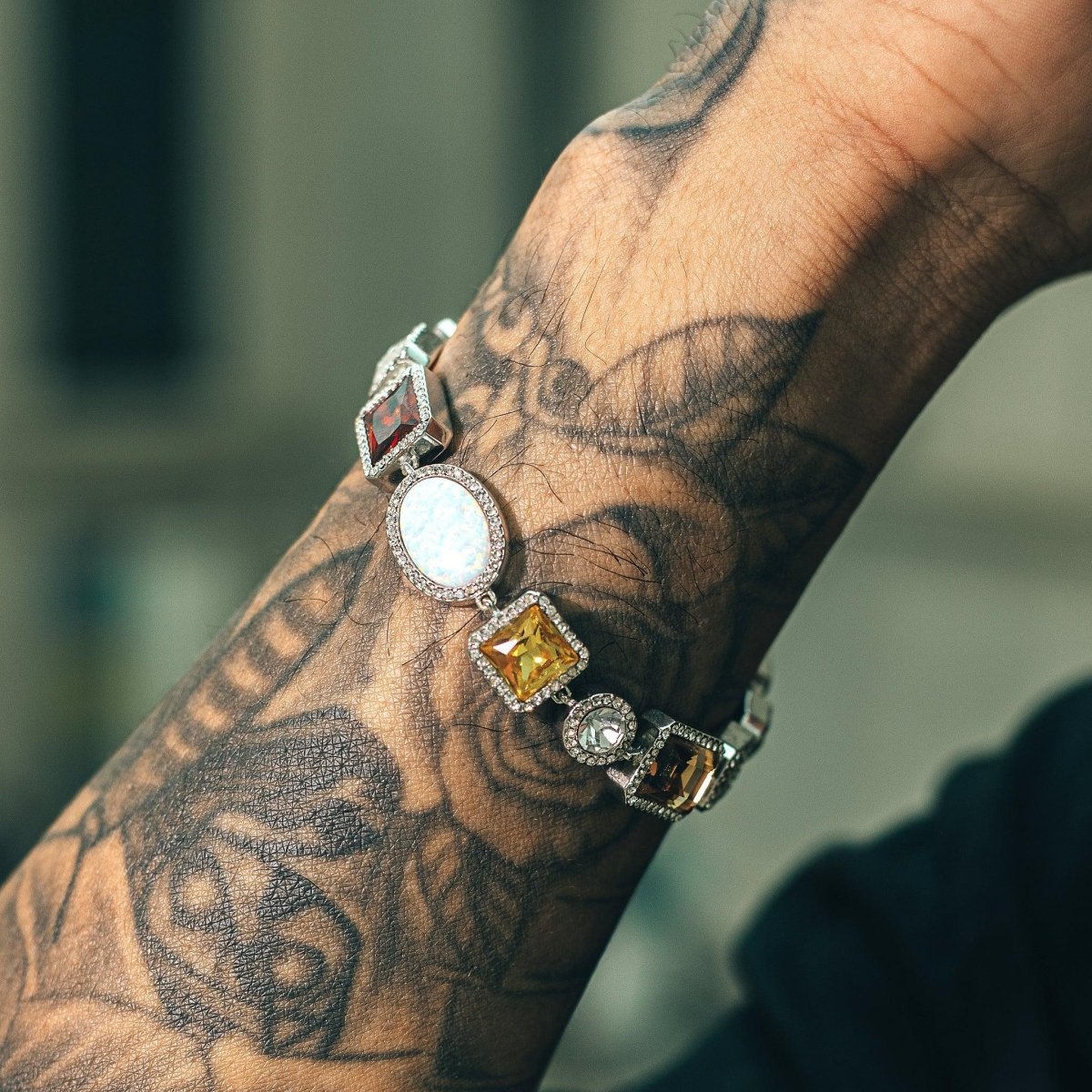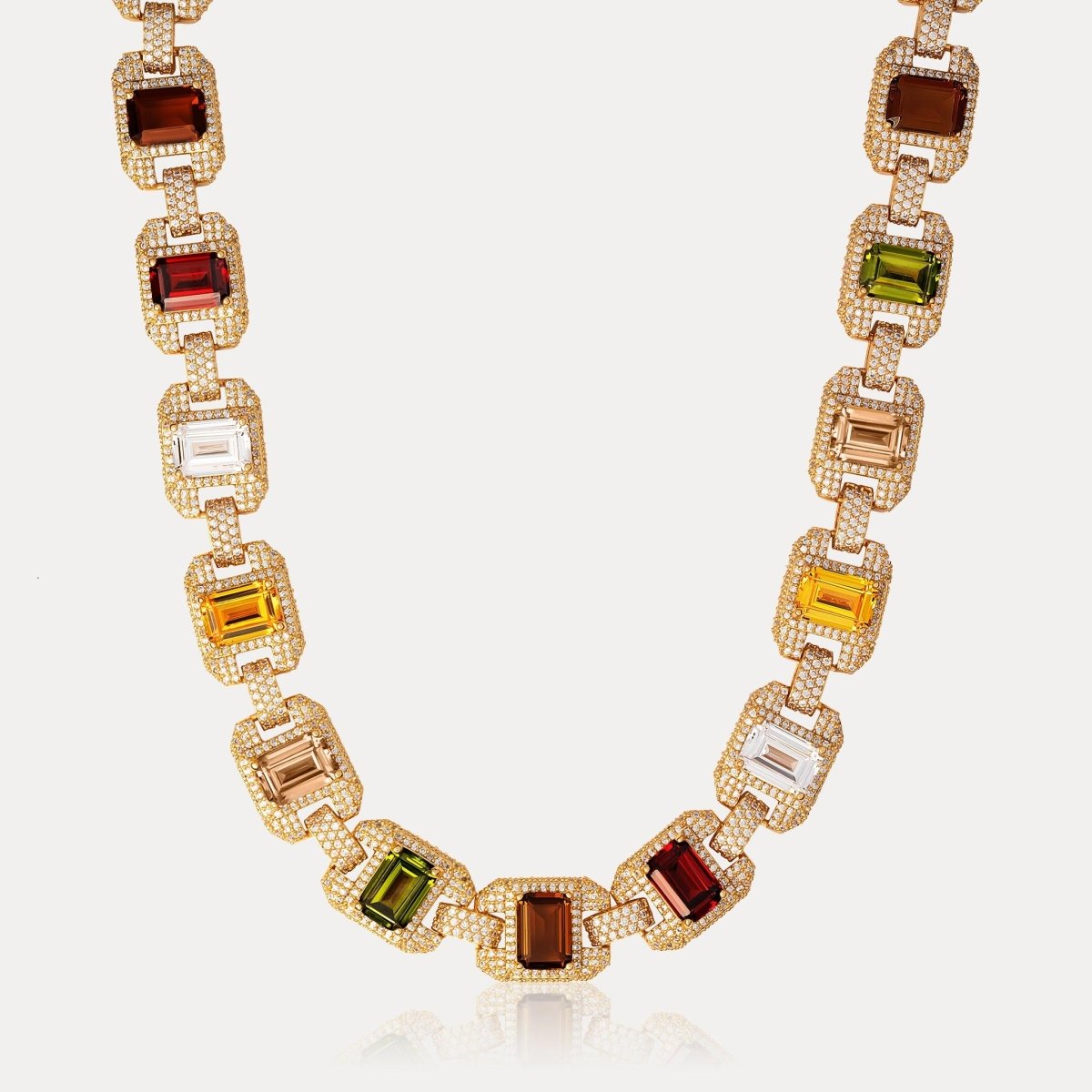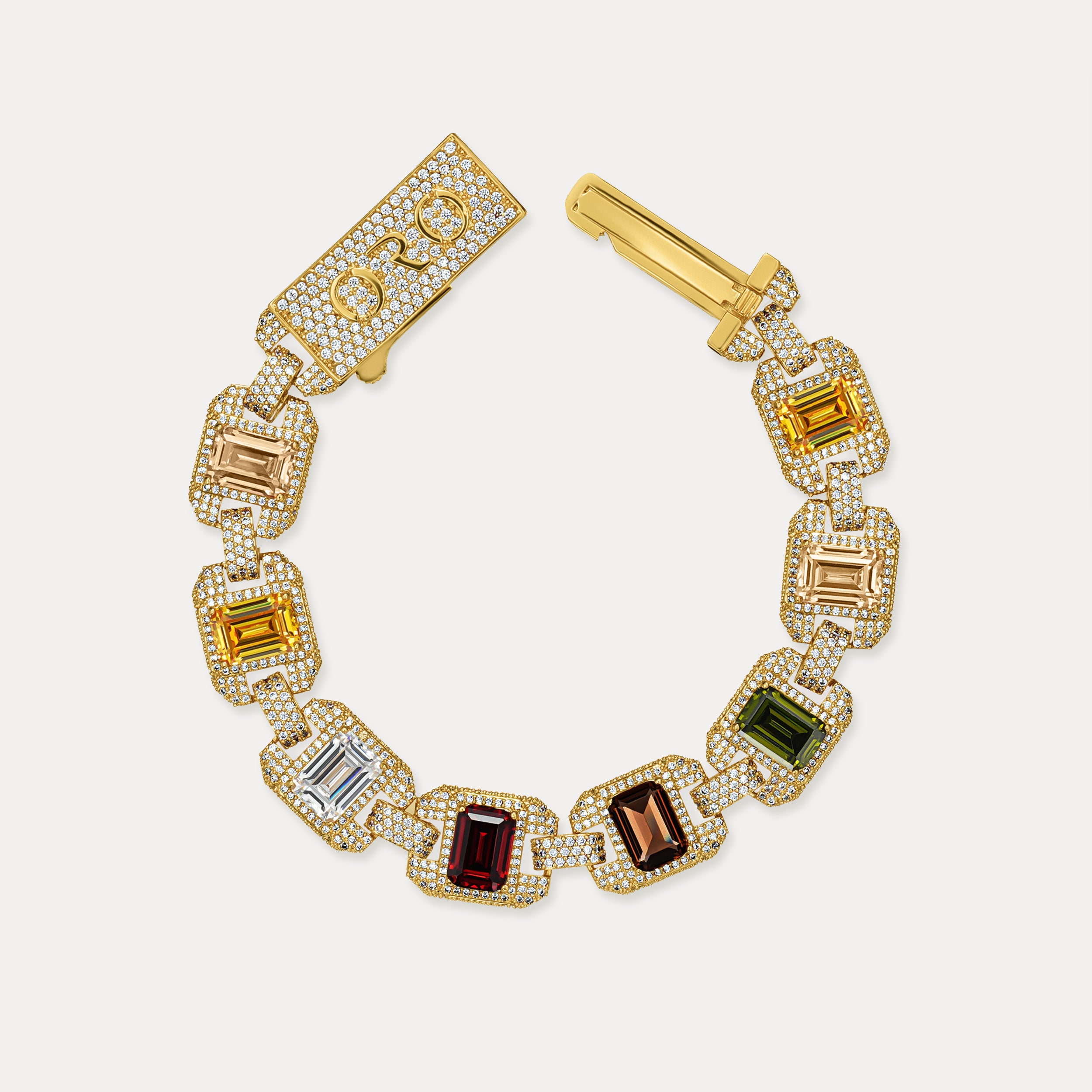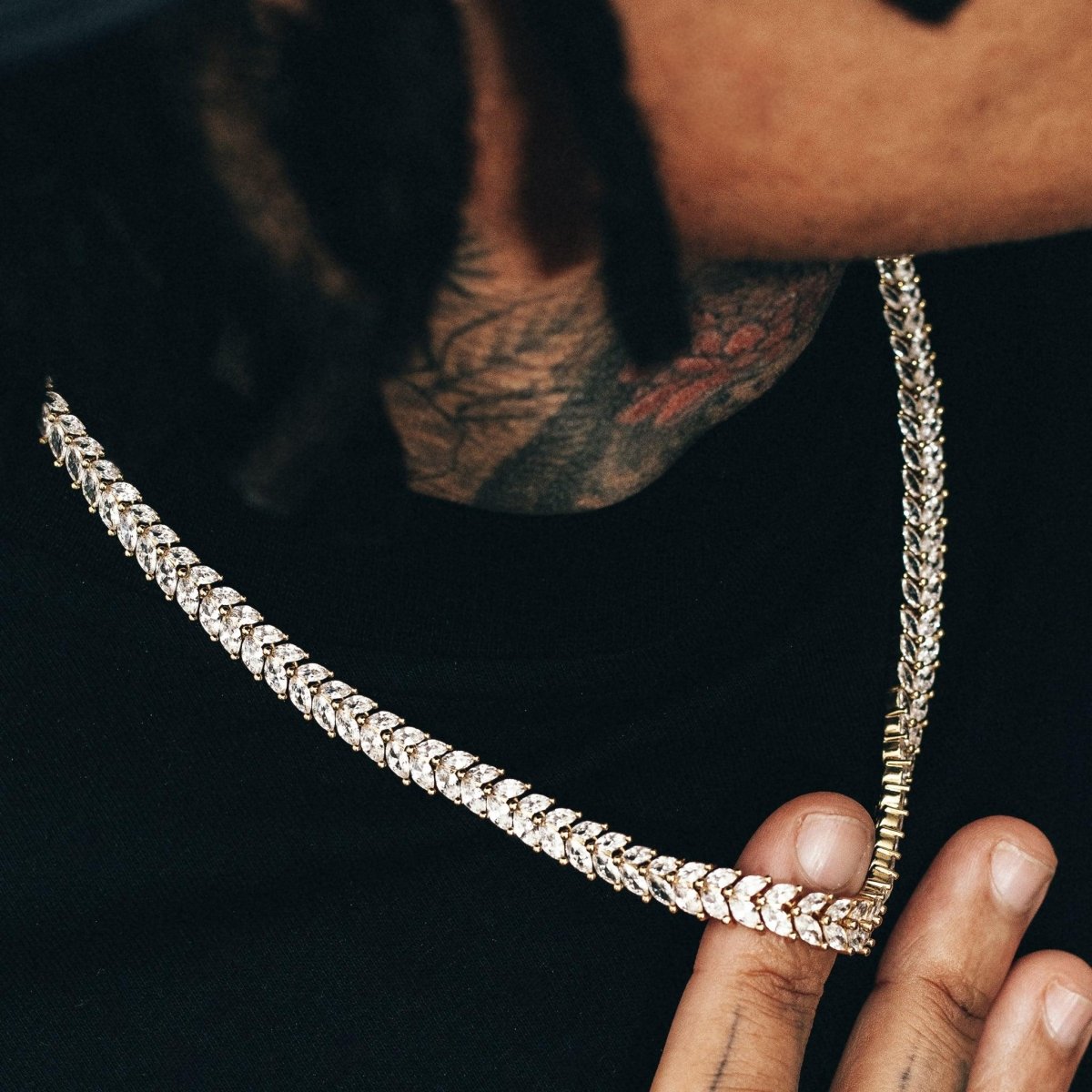10K vs. 14K Gold: which should you choose?
When it comes to buying gold jewelry, one of the most important factors to consider is the purity of the gold. Gold purity is measured in karats, with 24 karat gold being the purest form. In this article, we will compare two common types of gold purity: 10K and 14K. We will discuss the differences in gold content, durability, color, and appearance between these two options. By understanding the pros and cons of each, you can make an informed decision when choosing the right gold for your jewelry collection.
Key Takeaways
- 10K gold contains 41.7% pure gold, while 14K gold contains 58.3% pure gold.
- 10K gold is more durable and less prone to scratches and dents compared to 14K gold.
- 14K gold has a richer and warmer color compared to 10K gold.
- Consider your budget, style, and the occasion when choosing between 10K and 14K gold.
- Proper cleaning, storage, and maintenance are essential for preserving the beauty of your gold jewelry.
Understanding Gold Purity
What is Gold Purity?
Gold purity refers to the amount of gold present in a piece of jewelry. It is measured in karats, with 24 karat gold being the purest form. In the case of 10K and 14K gold, the number represents the percentage of gold in the alloy. For example, 10K gold contains 41.7% gold, while 14K gold contains 58.3% gold. This means that 14K gold is considered to be purer and of higher quality than 10K gold. However, it is important to note that higher purity also means a higher price tag. So, when choosing between 10K and 14K gold, it is essential to consider your budget and personal preferences.
Different Types of Gold Purity
When it comes to gold purity, there are different types to consider. The most common types include 10K gold, 14K gold, and 18K gold. Each type has a different level of gold content, which affects its appearance, durability, and price.
Here is a table that compares the gold content of these different types:
| Gold Purity | Gold Content |
|---|---|
| 10K gold | 41.7% pure |
| 14K gold | 58.3% pure |
| 18K gold | 75% pure |
As you can see, the higher the gold purity, the more gold content the jewelry contains. This means that 18K gold has a higher value and is more expensive compared to 10K and 14K gold.
It's important to note that the gold content is not the only factor to consider when choosing the right gold for you. Other factors such as durability, strength, color, and appearance also play a role in your decision. It's best to consider your budget, style, preference, and the occasion when making your choice.
Tip: If you're looking for a more affordable option, 10K gold may be a suitable choice. However, if you prefer a higher gold content and are willing to invest more, 14K or 18K gold would be a better option.
How is Gold Purity Measured?
Gold purity is measured using a unit called karats. Karats indicate the percentage of pure gold in a piece of jewelry. For example, 24 karat gold is considered to be 100% pure gold. However, pure gold is too soft for everyday wear, so it is often alloyed with other metals to increase its durability.
To determine the gold purity of a piece of jewelry, it is tested using various methods. One common method is the acid test, where a small sample of the gold is treated with acid to see how it reacts. Another method is the X-ray fluorescence (XRF) test, which uses X-rays to analyze the composition of the gold.
It is important to note that the karat mark on a piece of jewelry is a legal requirement in many countries. This mark indicates the gold purity and can help consumers make informed decisions when purchasing gold jewelry.
When buying gold jewelry, it is recommended to look for reputable jewelers who provide certification of the gold purity. This ensures that you are getting the quality and purity you desire.
Comparing 10K and 14K Gold
What is 10K Gold?
10K gold is an alloy that contains 41.7% pure gold and 58.3% other metals such as copper, silver, and zinc. It is known for its durability and affordability. The lower gold content makes it less expensive compared to higher purity gold. However, it may appear slightly less yellow in color compared to higher karat gold.
When purchasing 10K gold jewelry, it's important to consider the trade-off between affordability and gold purity. While it may not have the same level of purity as higher karat gold, it still offers a beautiful and durable option for those on a budget.
Here is a comparison table that highlights the key differences between 10K and 14K gold:
| Property | 10K Gold | 14K Gold |
|---|---|---|
| Gold Content | 41.7% | 58.3% |
| Durability | High | High |
| Color | Slightly less yellow | More yellow |
Important Tip: When choosing between 10K and 14K gold, consider your budget, desired color, and the level of durability you need for your jewelry.
What is 14K Gold?
14K gold is an alloy that contains 58.3% pure gold. It is a popular choice for jewelry due to its balance between durability and value. Compared to 10K gold, 14K gold has a higher gold content, making it more valuable. The additional gold content also gives 14K gold a richer and warmer color. However, it is important to note that the higher gold content also means that 14K gold may be slightly softer and more prone to scratches and dents than 10K gold. When choosing between 10K and 14K gold, consider your budget, style, and the level of durability you require. If you prefer a more affordable option with good durability, 10K gold may be suitable. On the other hand, if you value a higher gold content and a richer color, 14K gold is a great choice.
Differences in Gold Content
When comparing 10K and 14K gold, the main difference lies in their gold content. 10K gold contains 41.7% pure gold, while 14K gold contains 58.3% pure gold. This means that 10K gold has a lower gold content compared to 14K gold. The remaining percentage in both types of gold is made up of other metals, such as copper, silver, and zinc.
To better understand the difference, here is a comparison table:
| Gold Purity | Gold Content | Other Metals |
|---|---|---|
| 10K Gold | 41.7% | 58.3% |
| 14K Gold | 58.3% | 41.7% |
It's important to note that the higher the gold content, the more valuable and expensive the gold jewelry will be. However, the lower gold content in 10K gold makes it more durable and less prone to scratches and dents. On the other hand, 14K gold has a richer color and appearance due to its higher gold content.
In summary, the difference in gold content between 10K and 14K gold affects the value, durability, and appearance of the jewelry. Consider your preferences and budget when choosing the right gold for you.
Durability and Strength
When it comes to durability and strength, both 10K and 14K gold have their own advantages. 10K gold is known for its durability due to its lower gold content and higher alloy composition. It is less likely to scratch or bend compared to 14K gold. On the other hand, 14K gold is a bit softer and more prone to scratches and dents. However, it is still a durable option for everyday wear.
In terms of strength, 10K gold is generally considered to be stronger than 14K gold. This is because the higher alloy content in 10K gold makes it more resistant to wear and tear. However, it's important to note that both 10K and 14K gold are still relatively strong and suitable for everyday jewelry.
In summary:
- 10K gold is more durable and less likely to scratch or bend.
- 14K gold is slightly softer and more prone to scratches and dents.
- Both 10K and 14K gold are strong and suitable for everyday wear.
Color and Appearance
When it comes to color and appearance, 10K and 14K gold have some noticeable differences. 10K gold tends to have a slightly paler color compared to 14K gold, which has a richer and deeper hue. This is because 10K gold contains a lower percentage of pure gold and a higher percentage of other metals. As a result, 10K gold may appear less vibrant and yellow compared to 14K gold.
In terms of appearance, 10K gold may also be more prone to tarnishing and oxidation due to its higher metal content. On the other hand, 14K gold is known for its lustrous and bright appearance, making it a popular choice for jewelry. It offers a balance between durability and beauty, making it suitable for everyday wear.
In summary, if you prefer a brighter, richer, and more vibrant gold color, 14K gold may be the better choice for you. However, if you're looking for a more affordable option without compromising too much on quality, 10K gold can still provide a beautiful appearance.
Choosing the Right Gold for You
Consider Your Budget
When choosing between 10K and 14K gold, it's important to consider your budget. Price is a significant factor to take into account. 10K gold is generally more affordable compared to 14K gold due to its lower gold content. However, it's important to note that the price difference may vary depending on current market conditions.
If you have a limited budget, 10K gold may be a more suitable option. It offers a balance between affordability and gold quality. On the other hand, if you have a larger budget and are willing to invest in higher gold purity, 14K gold may be the better choice.
Consider your financial situation and how much you are willing to spend on your gold jewelry. It's important to find a balance between your budget and the quality of gold you desire.
Consider Your Style and Preference
When choosing between 10K and 14K gold, it's important to consider your personal style and preference. BoldWhether you prefer a more subtle and understated look or a bolder and more luxurious appearance, your choice of gold purity can greatly impact the overall aesthetic of your jewelry. ItalicsWhile both 10K and 14K gold can be beautiful, they have distinct differences that may align better with certain styles.
Here are a few factors to consider when it comes to style and preference:
- Color: 10K gold tends to have a slightly paler yellow color compared to 14K gold, which has a richer and warmer tone. Depending on your personal taste, you may prefer one over the other.
- Design: Some intricate and delicate designs may be better suited for 14K gold due to its higher gold content, which allows for more flexibility and durability.
- Occasion: Consider the occasion or event you'll be wearing the jewelry to. For formal events, 14K gold may be more appropriate, while 10K gold can be a versatile choice for everyday wear.
Remember, the choice between 10K and 14K gold ultimately comes down to your personal style and preference. Take the time to try on different pieces and see which gold purity resonates with you the most.
Consider the Occasion
When choosing between 10K and 14K gold, it's important to consider the occasion for which you'll be wearing the jewelry. Weddings and other formal events often call for more luxurious and elegant pieces, making 14K gold a great choice. Its higher gold content gives it a richer and more vibrant appearance, perfect for special occasions. On the other hand, if you're looking for everyday jewelry that you can wear casually or to work, 10K gold may be more suitable. Its lower gold content makes it more durable and less prone to scratches, making it ideal for daily wear. Ultimately, the occasion and your personal style should guide your decision when choosing between 10K and 14K gold.
Consider Long-Term Value
When choosing between 10K and 14K gold, it's important to consider the long-term value of your jewelry. While both types of gold have their own merits, 14K gold is generally considered to have higher long-term value.
One of the main reasons for this is the higher gold content in 14K gold. With a gold purity of 58.3%, 14K gold contains more gold than 10K gold, which has a purity of 41.7%. This higher gold content can contribute to the overall value of the jewelry over time.
Additionally, 14K gold is often more desirable in the resale market. Its higher gold content and perceived higher quality make it a popular choice among buyers. This can be an important factor to consider if you plan on selling or passing down your jewelry in the future.
In summary, if long-term value is a priority for you, 14K gold may be the better choice. Its higher gold content and market desirability can contribute to the overall value of your jewelry over time.
Caring for Your Gold Jewelry
Cleaning and Maintenance
Proper cleaning and maintenance are essential for keeping your gold jewelry looking its best. Here are some tips to help you care for your gold pieces:
-
Use a soft cloth or a jewelry cleaning solution specifically designed for gold to gently clean your jewelry.
-
Avoid using harsh chemicals or abrasive materials that can damage the gold.
-
Store your gold jewelry in a separate compartment or pouch to prevent scratching or tangling.
-
Remove your gold jewelry before engaging in activities that may expose it to chemicals, such as swimming in chlorinated pools or using cleaning products.
-
Regularly inspect your gold jewelry for any signs of damage or loose stones and have them repaired by a professional jeweler if necessary.
Remember, proper care and maintenance will help preserve the beauty and value of your gold jewelry for years to come.
Storage and Protection
When it comes to storing and protecting your gold jewelry, there are a few important considerations to keep in mind:
-
Avoid exposure to harsh chemicals: Chemicals such as chlorine can damage the surface of your gold jewelry, so it's best to remove your pieces before swimming in a pool or using cleaning products.
-
Store in a separate compartment: To prevent scratching and tangling, store your gold jewelry in a separate compartment or pouch to keep them safe from other jewelry pieces.
-
Regular cleaning: Regularly clean your gold jewelry using a mild soap and warm water. Gently scrub with a soft brush to remove any dirt or residue.
-
Avoid direct sunlight: Prolonged exposure to sunlight can cause your gold jewelry to fade or discolor. Store them in a cool, dark place to maintain their shine and luster.
Remember, proper storage and maintenance will help your gold jewelry last for years to come.
Avoiding Damage
When it comes to preserving the beauty and longevity of your gold jewelry, there are a few key steps you can take to avoid damage:
-
Remove your gold jewelry before engaging in physical activities such as sports or household chores. This will help prevent scratches, dents, or other forms of damage that can occur when gold comes into contact with hard surfaces.
-
Avoid exposing your gold jewelry to harsh chemicals such as chlorine or bleach. These chemicals can cause discoloration or even weaken the structure of the gold.
-
Store your gold jewelry properly when you're not wearing it. Consider using a soft cloth or jewelry box with separate compartments to prevent scratching or tangling.
-
Regularly clean your gold jewelry using mild soap and warm water. Gently scrub the jewelry with a soft brush or cloth to remove any dirt or oils that may have accumulated.
Remember, taking these simple precautions can go a long way in preserving the beauty and value of your gold jewelry.
Professional Maintenance
Proper maintenance of your gold jewelry is essential to keep it looking its best. Here are some tips to help you take care of your precious pieces:
-
Regular Cleaning: Clean your gold jewelry regularly using a mild soap and warm water. Gently scrub the jewelry with a soft brush to remove any dirt or residue.
-
Avoid Harsh Chemicals: Avoid exposing your gold jewelry to harsh chemicals such as bleach or chlorine, as they can damage the metal and cause discoloration.
-
Storage and Protection: Store your gold jewelry in a soft cloth or a jewelry box to prevent scratches and tangling. Avoid storing different pieces together to prevent them from scratching each other.
-
Avoid Extreme Temperatures: Avoid exposing your gold jewelry to extreme temperatures, as it can cause the metal to expand or contract, leading to damage.
Remember, proper care and maintenance will help your gold jewelry retain its beauty and shine for years to come.
Conclusion
In conclusion, when deciding between 10K and 14K gold, it ultimately comes down to personal preference and budget. Quality and durability are important factors to consider, as well as the desired color and price. While 14K gold offers a higher purity and a wider range of colors, 10K gold provides a more affordable option without compromising too much on quality. It's important to weigh these factors and choose the option that best suits your needs and preferences. Whether you choose 10K or 14K gold, both can be beautiful and valuable additions to your jewelry collection.
Frequently Asked Questions
What is the difference between 10K and 14K gold?
The main difference between 10K and 14K gold is the gold content. 10K gold contains 41.7% pure gold, while 14K gold contains 58.3% pure gold.
Is 10K gold or 14K gold better?
The choice between 10K and 14K gold depends on your personal preferences and budget. 10K gold is more affordable and durable, while 14K gold has a higher gold content and a richer color.
Does 10K gold tarnish?
10K gold is less prone to tarnishing compared to higher purity gold. However, it may still tarnish over time if not properly cared for.
Can you wear 10K gold every day?
Yes, you can wear 10K gold every day. It is durable enough to withstand daily wear and tear.
Will 14K gold turn your finger green?
No, 14K gold is unlikely to turn your finger green. It contains a higher gold content and is less likely to cause skin discoloration.
Can you mix 10K and 14K gold?
Yes, you can mix 10K and 14K gold jewelry. However, keep in mind that the different gold purities may affect the overall appearance and color of the jewelry.
Best Sellers



















































Leave a comment
This site is protected by hCaptcha and the hCaptcha Privacy Policy and Terms of Service apply.